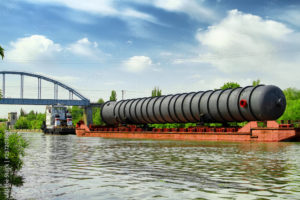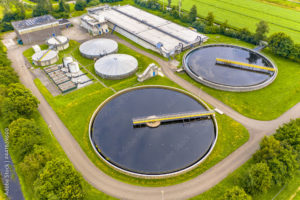Best Chemical Supplier in Indonesia for Palm Oil Plantation
Here is a list of major chemicals used in palm oil plantation management, along with a brief description of their applications:
- Glyphosate: Herbicide used for weed control in palm oil plantations.
- Paraquat: Herbicide used for weed control and desiccation of vegetation in palm oil plantations.
- Atrazine: Herbicide used for broadleaf weed control in palm oil plantations.
- 2,4-Dichlorophenoxyacetic acid (2,4-D): Herbicide used for selective weed control in palm oil plantations.
- Diuron: Herbicide used for pre-emergence and post-emergence weed control in palm oil plantations.
- Metribuzin: Herbicide used for broad-spectrum weed control in palm oil plantations.
- Hexazinone: Herbicide used for broad-spectrum weed control in palm oil plantations.
- Pendimethalin: Herbicide used for pre-emergence weed control in palm oil plantations.
- Glufosinate-ammonium: Herbicide used for non-selective weed control in palm oil plantations.
- Methyl bromide: Fumigant used for soil sterilization and pest control in palm oil nurseries.
- Abamectin: Insecticide used for controlling leaf-eating pests in palm oil plantations.
- Imidacloprid: Insecticide used for controlling sucking insects in palm oil plantations.
- Chlorpyrifos: Insecticide used for broad-spectrum insect control in palm oil plantations.
- Cypermethrin: Insecticide used for controlling a wide range of insects in palm oil plantations.
- Malathion: Insecticide used for controlling pests in palm oil plantations.
- Methomyl: Insecticide used for controlling leaf-eating pests in palm oil plantations.
- Bifenthrin: Insecticide used for controlling a variety of insects in palm oil plantations.
- Bacillus thuringiensis (Bt): Biopesticide used for controlling caterpillars and other insect pests in palm oil plantations.
- Copper-based fungicides: Fungicides used for controlling fungal diseases in palm oil plantations.
- Mancozeb: Fungicide used for controlling various fungal diseases in palm oil plantations.
- Azoxystrobin: Fungicide used for controlling fungal diseases, such as leaf spots, in palm oil plantations.
- Propiconazole: Fungicide used for controlling fungal diseases, such as basal stem rot, in palm oil plantations.
- Tridemorph: Fungicide used for controlling Basidiomycete diseases in palm oil plantations.
- Metalaxyl: Fungicide used for controlling Phytophthora diseases in palm oil plantations.
- Gibberellic acid: Plant growth regulator used for promoting uniform fruit development in oil palm trees.
- Ethephon: Plant growth regulator used for enhancing fruit ripening in oil palm trees.
- Potassium nitrate: Fertilizer used to supplement potassium nutrition in oil palm plantations.
- Urea: Fertilizer used to supply nitrogen nutrition to oil palm trees.
- Rock phosphate: Fertilizer used to provide phosphorus nutrition in oil palm plantations.
- Muriate of potash: Fertilizer used to supply potassium nutrition in oil palm plantations.
- Dolomite: Fertilizer used to correct soil acidity and supply calcium and magnesium to oil palm trees.
- Single superphosphate: Fertilizer used to provide phosphorus nutrition to oil palm plantations.
- Magnesium sulfate: Fertilizer used to correct magnesium deficiency in oil palm plantations.
- Borax: Fertilizer used to supply boron nutrition in oil palm plantations.
- Zinc sulfate: Fertilizer used to correct zinc deficiency in oil palm plantations.
- Copper sulfate: Fertilizer used to correct copper deficiency in oil palm plantations.
- Lime (Calcium carbonate): Used for soil pH adjustment and acidity correction in palm oil plantations.
- Organic mulch: Material used for weed suppression, moisture retention, and soil improvement in palm oil plantations.
- Growth enhancers and bio-stimulants: Various products used to enhance plant growth, yield, and stress tolerance in oil palm trees.
- Adjuvants: Chemical additives used to enhance the effectiveness and performance of herbicides, insecticides, and fungicides in palm oil plantations.
Please note that the specific use of chemicals may vary depending on factors such as pest and disease pressures, soil conditions, and local regulations. It’s essential to consult with agricultural professionals and adhere to recommended practices and guidelines when using chemicals in palm oil plantations.
Best Formic Acid Supplier In Indonesia
The Role of Formic Acid in Palm Oil Plantation Management
Introduction: Formic acid, also known as methanoic acid, is a colorless liquid with a pungent odor. It has gained significant recognition in the agricultural industry, including its application in palm oil plantation management. This versatile chemical offers several benefits that contribute to the successful cultivation of oil palm trees. Let’s explore the usage of formic acid in palm oil plantation management.
Weed Control: Formic acid serves as an effective herbicide in palm oil plantations. When applied properly, it helps control the growth of unwanted weeds that compete with oil palm trees for essential nutrients, water, and sunlight. By selectively targeting weeds, formic acid minimizes the negative impact on the growth and productivity of oil palm trees, resulting in healthier plantations.
Soil Acidification: Acidity plays a vital role in the growth and nutrient absorption of oil palm trees. Formic acid can be used to adjust soil pH, particularly in alkaline or neutral soils. By lowering the pH level, formic acid promotes the release and availability of essential nutrients, such as nitrogen, phosphorus, and potassium, enhancing the overall nutrient uptake by oil palm trees. This helps maintain optimal soil conditions and supports healthy growth and development.
Pest and Disease Management: Formic acid also exhibits properties that aid in pest and disease management in palm oil plantations. It acts as an effective antimicrobial agent against certain pathogens, reducing the risk of diseases that can affect oil palm trees. Additionally, formic acid acts as a deterrent for certain pests, helping to minimize pest infestations and subsequent damage to the palm trees.
Improved Nutrient Utilization: Formic acid can enhance nutrient utilization by oil palm trees. When used as a foliar fertilizer, it helps increase the efficiency of nutrient absorption, allowing the trees to make better use of available nutrients. This promotes optimal growth, development, and productivity of the palm oil plantation.
Conclusion: Formic acid plays a significant role in palm oil plantation management, contributing to weed control, soil acidification, pest and disease management, as well as improved nutrient utilization. Its versatile nature and effectiveness make it a valuable tool for sustainable and efficient palm oil cultivation. However, it is crucial to adhere to recommended guidelines and dosage rates when using formic acid to ensure optimal results and minimize any potential adverse effects. By harnessing the benefits of formic acid, palm oil plantation managers can optimize their cultivation practices and achieve healthier, more productive oil palm trees.








